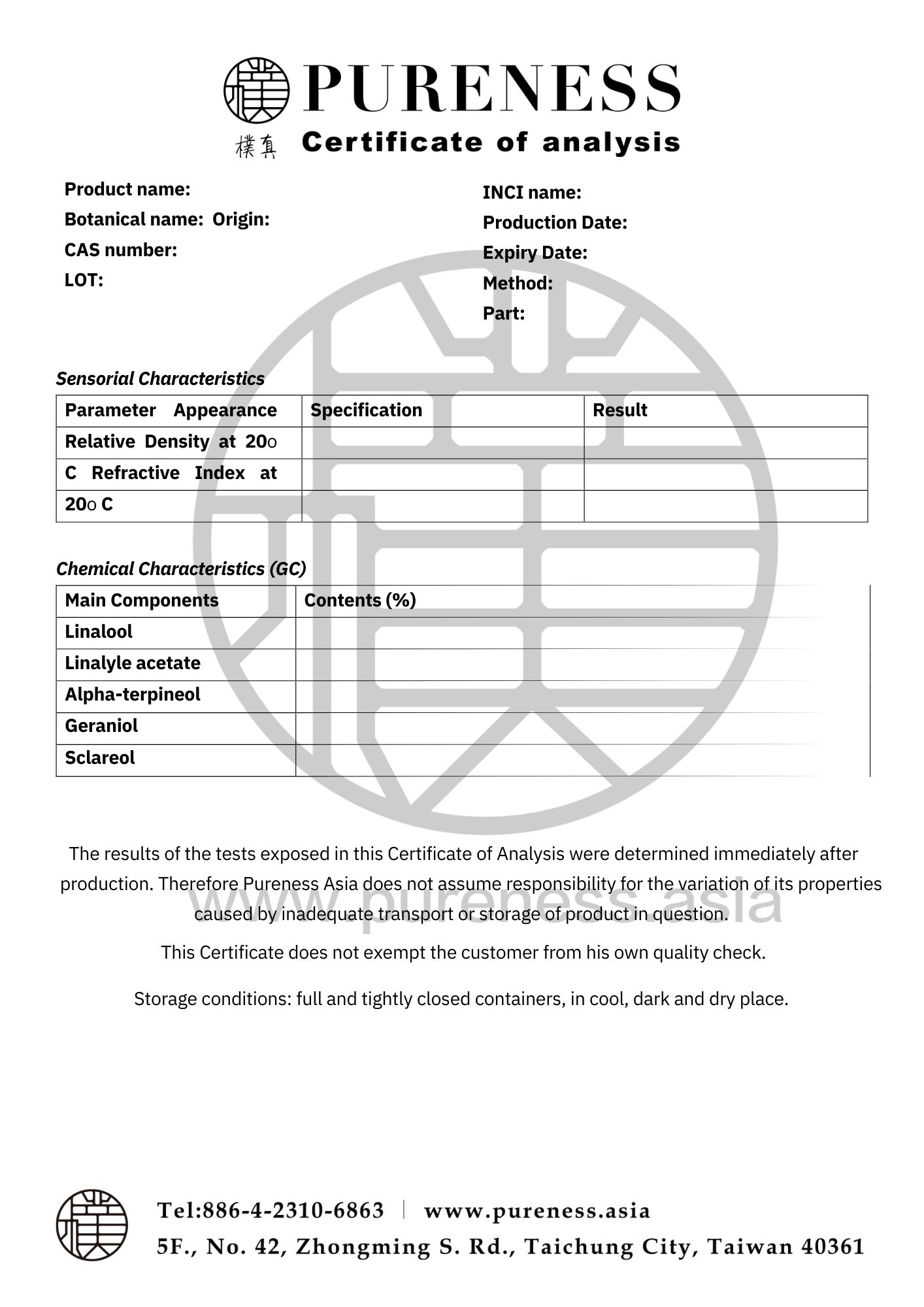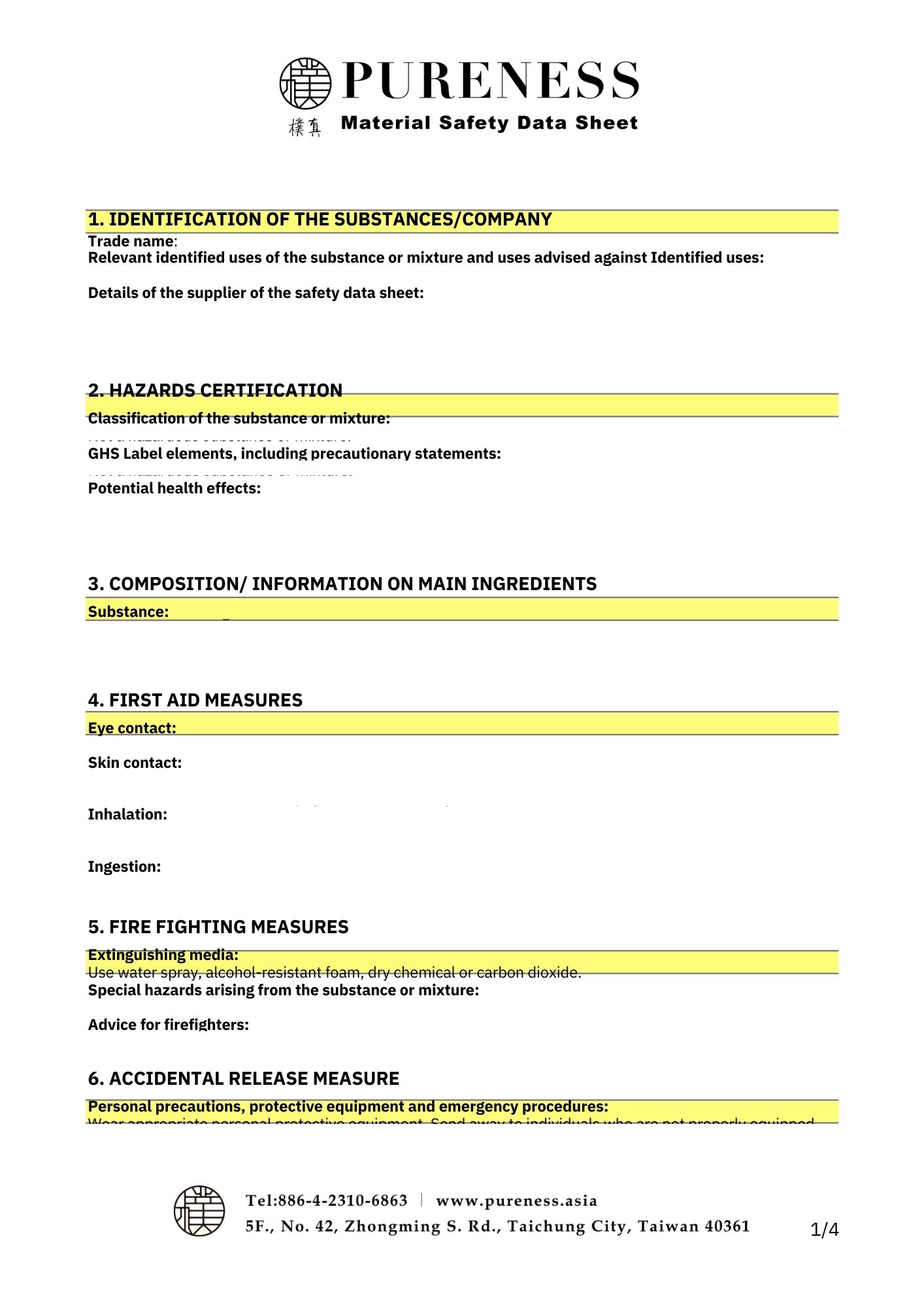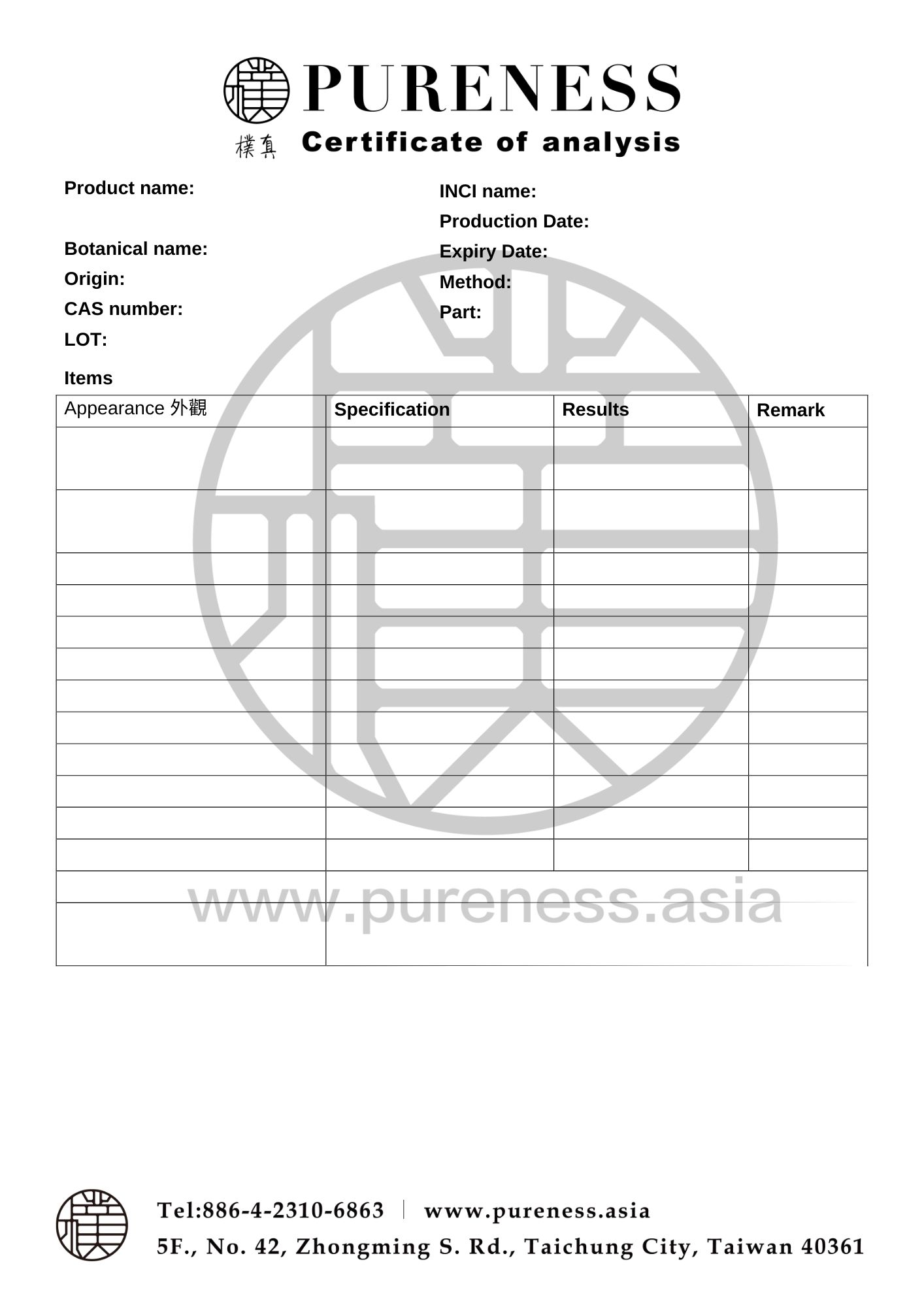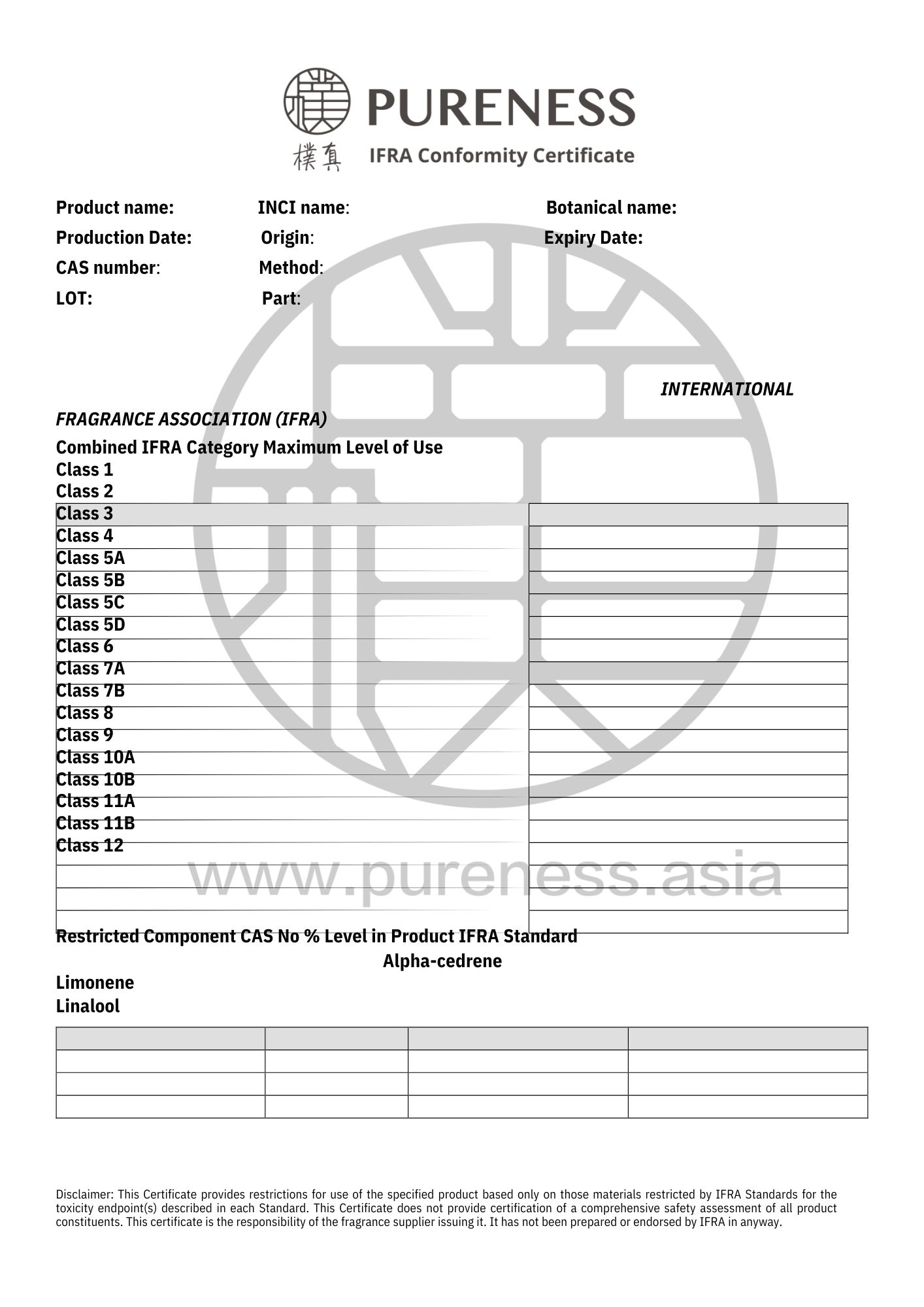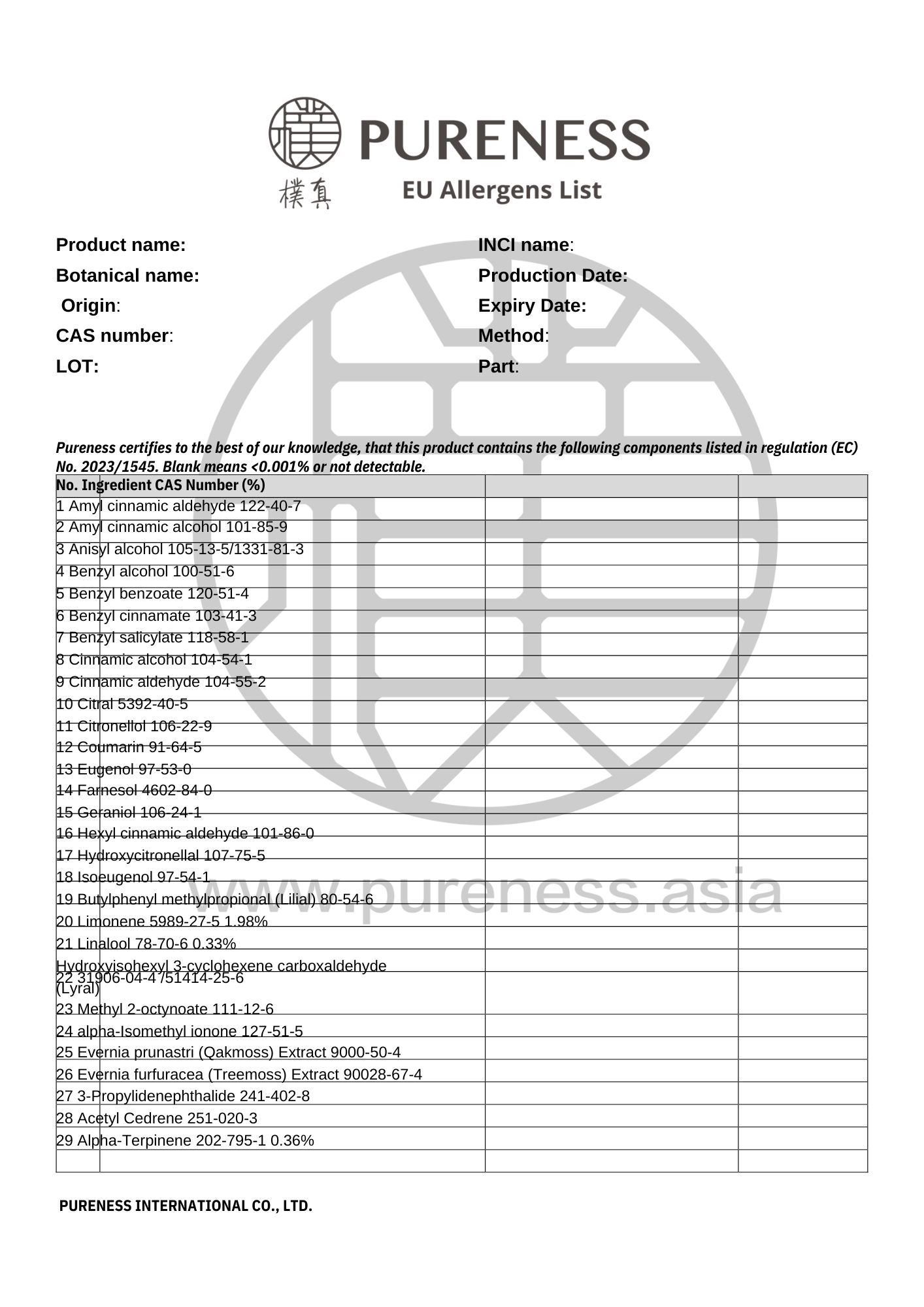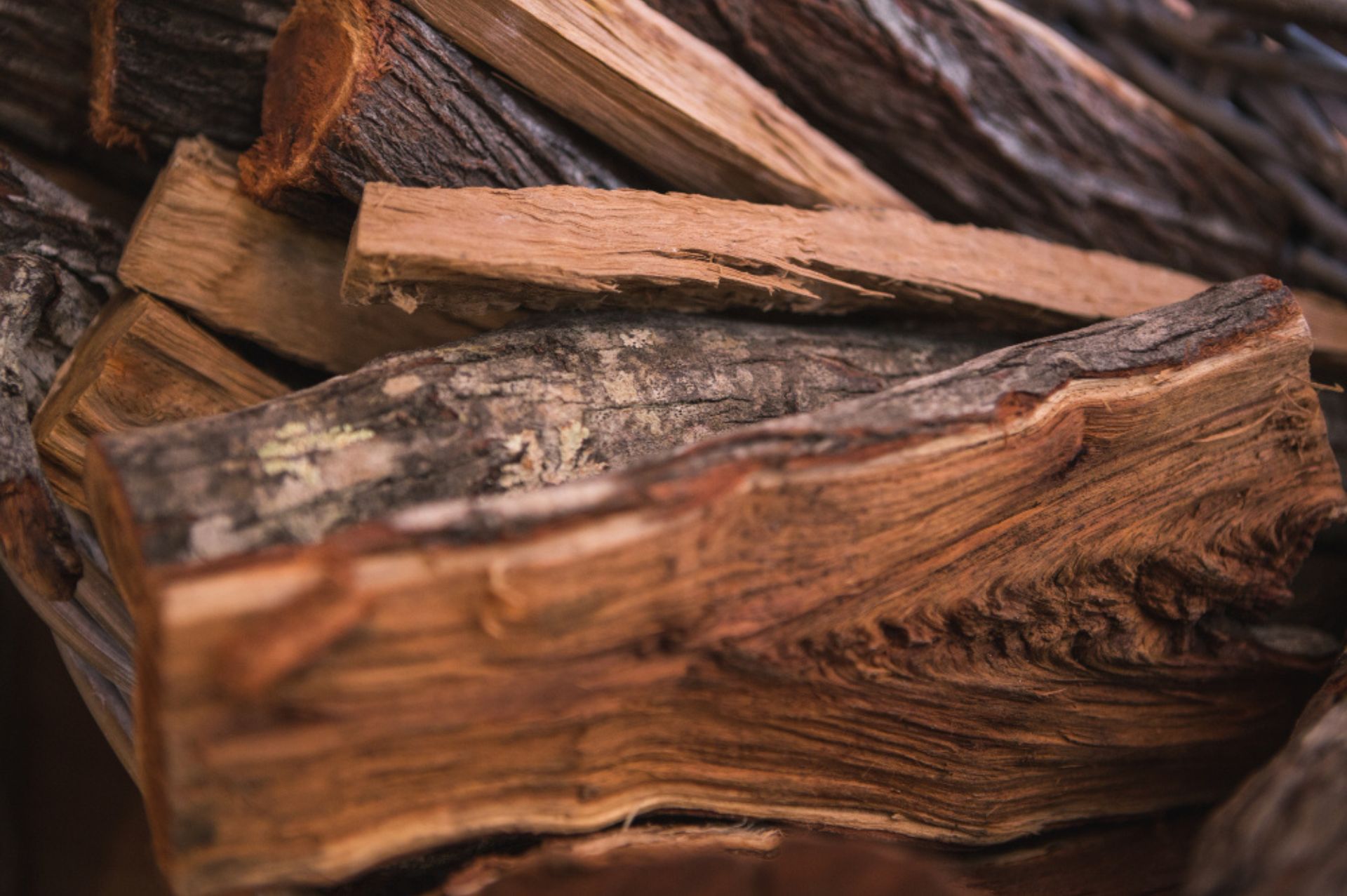
Sandalwood
Scientific name|Santalum album
Origin|India
Classification|Wood series
Specifications|500g-25kg Please contact sales for details
Extraction part|Heartwood
Extraction method | Distillation
Plant family|Santalaceae
Aroma|Warm, sweet, and woody
▎Essential Oil Introduction
Sandalwood is one of the oldest medicinal aromatic plants, with a history of use spanning at least 3,000 years. Today, sandalwood essential oil remains a key ingredient in the fragrance industry. 'After 2008' describes its aroma as basically having no top notes, has excellent longevity, and can be used as a fixative to support or enhance other fragrances. Once volatilized, it leaves a woody, powdery aroma.
Indian sandalwood is an evergreen tree of medium height, reaching maturity at around 50 to 60 years, with a height of approximately 12 to 15 meters. At this stage, the heartwood achieves its maximum circumference and highest oil content. True sandalwood originates from South Asia and is a semi-parasitic tree, flourishing particularly in the highlands of South India at altitudes between 600 and 2,400 meters. The tree features symmetrically growing light green leaves and bell-shaped small flowers. The aromatic and oil-rich parts are found in the heartwood and roots, which are cut into slices for essential oil extraction.
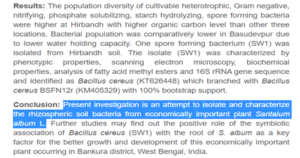
▸ Research has shown that the symbiotic relationship between soil bacteria and plants can affect the growth and quality of sandalwood.
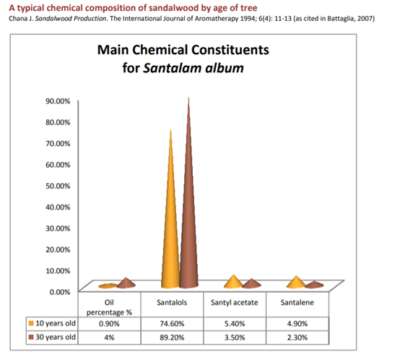
▸ To produce sandalwood essential oil, only heartwood from trees older than 30 years is used. Younger trees not only result in lower-quality oil but also significantly reduce the yield. (Chana J, 1994; 6(4): 11-13; as cited in Battaglia 2007).
▎Component Analysis
|Main component: Sesquiterpenols
The primary chemical components of Indian sandalwood are "Santalol, Santyl acetate, and Santalene" (Esoteric Oils, 2009). Among these, the major components are sesquiterpenols, specifically α-santalol and β-santalol.
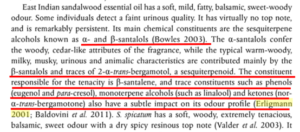
▸ The woody aroma of sandalwood primarily comes from (Z)-β-santalol, with the presence of trace amounts of 2-α-trans-bergamotol contributing to its longevity. The persistence of the scent is largely due to β-santalene and other minor components, such as eugenol, para-cresol, and guaiol. Additionally, ketones, specifically non-α-trans-bergamotone, also play a role in the aroma.
|研究認證
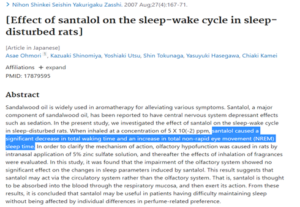
▸ Studies on the effects of santalol on the sleep-wake cycle of rats with sleep disorders found that santalol significantly reduced total wakefulness and increased non-rapid eye movement (NREM) sleep. The findings also suggest that santalol may exert its effects through the circulatory system rather than the olfactory system, meaning it is absorbed into the bloodstream via the respiratory mucosa, where it then takes effect.
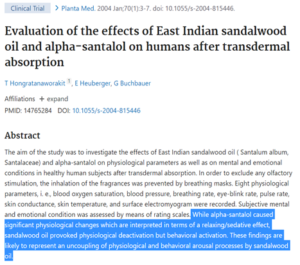
▸ Research related to the physiological changes induced by α-santalol in sandalwood essential oil.
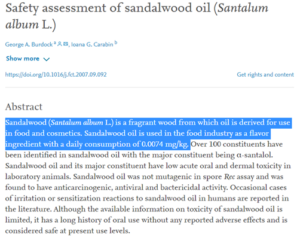
▸ Sandalwood (Santalum album L.) is an aromatic wood from which oil can be extracted for use in food and cosmetics. Sandalwood oil is utilized as a flavoring agent in the food industry.
|Raw Material Certifications
To obtain relevant certification information, please contact us on WhatsApp.
▎References
- Ashok K Dhakad et al. Biological,medicinal and toxicological significance of Eucalyptus leaf essential oil: areview. J Sci Food Agric. 2018 Feb;98(3):833-848.
- George A. Burdock .Ioana G. Carabin .Safetyassessment of sandalwood oil (Santalum album L.). Food and ChemicalToxicology.Volume 46, Issue 2, February 2008, Pages 421-432
- Conservation of Genetic Resources of Sandalwood (Santalum album L.var. album) in Timor Islands. A Rimbawanto -IUFRO World Series Vol. 30, 2012
- H Guo, J Zhang, W Gao, Z Qu, C Liu. Anti-diarrhoeal activity of methanol extractof Santalum album L. in mice and gastrointestinal effect on thecontraction of isolated jejunum in rats. Journal of Ethnopharmacology. Volume154, Issue 3, 3 July 2014, Pages 704-710
- Chana J. SandalwoodProduction. The International Journal of Aromatherapy 1994; 6(4): 1
- SchuhmacherA, Reichling J, Schnitzler P. Virucidal effect of peppermint oil on the envelopedviruses herpes simplex virus type 1 and type 2 in vitro. Phytomedicine. 2003;10(6-7):504-10
- Saddi M, Sanna A, Cottiglia F,Chisu L, Casu L, Bonsignore L, De Logu A.Ann Antiherpevirus activity of Artemisia arborescens essential oil andinhibition of lateral diffusion in Vero cells. Clin Microbiol Antimicrob. 2007Sep 26;6:10.
- Asae Ohmori , KazuakiShinomiya, Yoshiaki Utsu, Shin Tokunaga, YasuyukiHasegawa, Chiaki Kamei [Effect ofsantalol on the sleep-wake cycle in sleep-disturbed rats] Nihon ShinkeiSeishin Yakurigaku Zasshi. 2007 Aug;27(4):167-71.
- SatouT, Ogawa Y, Koike K. Relationship Between Emotional Behavior in Mice and theConcentration of (+)-α-Santalol in the Brain.PhytotherRes. 2015 Aug;29(8):1246-50.
- DwivediC, Guan X, Harmsen WL, Voss AL, Goetz-Parten DE, Koopman EM, Johnson KM,Valluri HB, Matthees DP. Chemopreventive effects of alpha-santalol on skin tumordevelopment in CD-1 and SENCAR mice. Cancer Epidemiol Biomarkers Prev. 2003Feb;12(2):151-6.
- HongratanaworakitT, Heuberger E, Buchbauer G. Evaluation of the effects of East Indian sandalwood oiland alpha-santalol on humans after transdermal absorption.Planta Med. 2004 Jan;70(1):3-7.
- BommareddyA, Brozena S, Steigerwalt J, Landis T, Hughes S, Mabry E, Knopp A, VanWert AL,Dwivedi C. Medicinal properties of alpha-santalol, a naturallyoccurring constituent of sandalwood oil: review. Nat Prod Res. 2019 Feb;33(4):527-543.
|Some images sourced from the internet. Contact for copyright removal|
